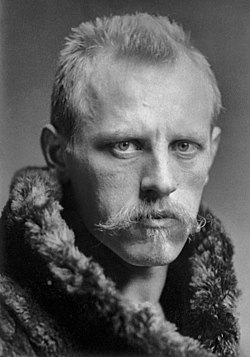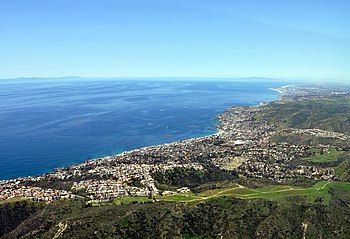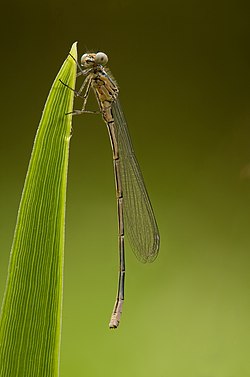Wikipedia:Picture of the day/October 2012
|
Featured picture tools: |
These featured pictures, as scheduled below, appeared as the picture of the day (POTD) on the English Wikipedia's Main Page in October 2012. Individual sections for each day on this page can be linked to with the day number as the anchor name (e.g. [[Wikipedia:Picture of the day/October 2012#1]] for October 1).
You can add an automatically updating POTD template to your user page using {{Pic of the day}} (version with blurb) or {{POTD}} (version without blurb). For instructions on how to make custom POTD layouts, see Wikipedia:Picture of the day.
October 1

|
The moon jelly (Aurelia aurita) is a widely studied species of jellyfish found throughout most of the world's oceans. It is translucent, usually about 25–40 cm (10–16 in) in diameter, and can be recognized by its four horseshoe-shaped gonads, easily seen through the bell. It is capable of only limited motion, and drifts with the current, even when swimming. Photo: Dante Alighieri
Recently featured:
|
October 2

|
Léon Georget (1879–1949) was a racing cyclist from Preuilly-sur-Claise, Indre-et-Loire, France. He was known as The Father of the Bol d'Or, having won the race nine times between 1903 and 1919 in Paris. Photo: Bain News Service; Restoration: Jujutacular
Recently featured:
|
October 3

|
The Ferrari F40 is a mid-engine, rear-wheel-drive, two-door coupé sports car produced by Ferrari from 1987 to 1992 as the successor to the 288 GTO. At the time it was the fastest, most powerful, and most expensive car that Ferrari sold to the public, as well as the first production automobile capable of exceeding 200 mph (320 km/h). Photo: Will Ainsworth
Recently featured:
|
October 4

|
Charlton Heston (1923–2008) was an American actor of film, theatre and television who is known for heroic roles in films such as The Ten Commandments, Ben-Hur (for which he won the Academy Award for Best Actor), El Cid, and Planet of the Apes. Heston was also known for his political activism. In the 1950s and 1960s he was one of a handful of Hollywood actors to speak openly against racism, and was an active supporter of the Civil Rights Movement. Initially a moderate Democrat, he later supported conservative Republican policies and was president of the National Rifle Association from 1998 to 2003. Photo: Rowland Scherman; Restoration: Nehrams2020
Recently featured:
|
October 5

|
Donald Pleasence (1919–1995) was a British film, television and stage actor best known for his roles in You Only Live Twice, where he played James Bond's arch-enemy Dr Blofeld, and The Great Escape, where he drew upon his experience in a German POW camp. He was nominated four times for the Tony Award for best performance by a leading actor in a Broadway play, and made an Officer of the Order of the British Empire for his services to the acting profession by Queen Elizabeth II in 1994. Photo: Allan Warren; Restoration: Peter Weis
Recently featured:
|
October 6

|
The Hooded Plover (Thinornis rubricollis) is a species of bird endemic to southern Australia and Tasmania. It is medium in size for a plover, stocky, and pale in color. Its length is 190 to 230 mm (7.5–9.1 in) and its wing-span 230 to 440 mm (9.1–17.3 in). Males and females are similar in appearance. With a population of about 7,000 individuals, it is classified as vulnerable. Photo: JJ Harrison
Recently featured:
|
October 7

|
|
Utopia, Limited, is a Savoy Opera, with music by Arthur Sullivan and libretto by W. S. Gilbert. It was the second-to-last of Gilbert and Sullivan's fourteen collaborations, premiering on 7 October 1893 for a run of 245 performances. Although it did not achieve the success of most of their earlier productions, it was the longest-running production to premiere at the Savoy Theatre in the 1890s. The opera satirises incorporation laws, by imagining the absurd convergence of natural persons with legal commercial entities, the perceived unfairness of bankruptcy laws, and other conceits and institutions of the late 19th-century British Empire. Image: Strobridge Lithographing Co.; Restoration: Adam Cuerden
Recently featured:
|
October 8

|
Sublimed dendritic thulium, with an argon arc remelted 1 cm3 cube for comparison. Thulium is a bright silvery-gray rare-earth metal that was discovered by Swedish chemist Per Teodor Cleve in 1879. It is never found in nature in pure form, but it is found in small quantities in minerals with other rare earths. Photo: Alchemist-hp
Recently featured:
|
October 9

|
The 1933 double eagle is a gold coin of the United States with a $20 face value. 445,500 specimens of this Saint-Gaudens double eagle were minted in 1933, the last year of production for the double eagle, but no specimens ever officially circulated, and nearly all were melted down due to the discontinuance of the domestic gold standard in 1933. It currently holds the record for the highest price paid at auction for a single U.S. coin, having been sold for $7.59 million. Photo: United States Mint
Recently featured:
|
October 10

|
Fridtjof Nansen (1861–1930) was a Norwegian explorer, scientist, diplomat, humanitarian and Nobel Peace Prize laureate. He led the team that made the first crossing of the Greenland interior in 1888, and won international fame after reaching a record northern latitude of 86°14′ during his North Pole expedition of 1893–96. Although he retired from exploration after his return to Norway, his techniques of polar travel and his innovations in equipment and clothing influenced a generation of subsequent Arctic and Antarctic expeditions. In 1922 he was awarded the Nobel Peace Prize for his work on behalf of the displaced victims of the First World War and related conflicts. Photo: Henry Van der Weyde; Restoration: Smalljim/PLW
Recently featured:
|
October 11

|
The Nicholas Delmas, a 196 m (643 ft) long container ship operated by Delmas, unloading at the Zanzibar port in Tanzania. Container ships carry all of their load in large intermodal containers, in a technique called containerization. They form a common means of commercial intermodal freight transport. Photo: Muhammad Mahdi Karim
Recently featured:
|
October 12

|
The giant Caribbean sea anemone (Condylactis gigantea) is a tropical species of sea anemone that is found in coral reefs, shallow ocean waters, in shore areas in the Caribbean Sea and western Atlantic Ocean. It grows to approximately 15 cm (6 in) high and 30 cm (12 in) wide, making the pedal disc diameter approximately 40 cm (16 in). Although it is primarily a sessile animal, it is quite a mobile species compared to other anemones, and capable of using its pedal disc to crawl slowly. Photo: Nick Hobgood
Recently featured:
|
October 13

|
The Whirlpool Galaxy is an interacting spiral galaxy that is estimated to be 23 ±4 million light-years from the Milky Way Galaxy in the constellation Canes Venatici. The galaxy and its companion, NGC 5195, are easily observed by amateur astronomers, and the pair may even be seen with binoculars. It was discovered on October 13, 1773, by French astronomer Charles Messier.
Recently featured:
|
October 14

|
A tabby is any cat that has a distinctive coat that features stripes, dots, lines or swirling patterns, usually together with a mark resembling an "M" on its forehead. Tabbies are not a cat breed, but a coat pattern found in many breeds of cat, as well as among the general mixed-breed population. The tabby pattern may be related to the coloration of the domestic cat's direct ancestor, the African Wildcat, which (along with the European Wildcat and Asiatic Wildcat) has a similar coloration. There are four genetically distinct tabby patterns: mackerel (shown here), classic, spotted, and ticked. Photo: Joaquim Alves Gaspar
Recently featured:
|
October 15

|
An aerial view of Laguna Beach, a seaside resort city and artist community located in southern Orange County, California, US. The region was originally known to the Spanish as "La Cañada de Las Lagunas" which means "The Canyon of the Small Lakes", in reference to two lakes found near the head of Laguna Canyon. Photo: D Ramey Logan
Recently featured:
|
October 16

|
The Sooty Oystercatcher (Haematopus fuliginosus) is a wading bird endemic to Australia and commonly found on its coastline. It prefers rocky coastlines, but will occasionally live in estuaries. All of its feathers are black and it has a red eye, eye ring and bill, and pink legs. The heaviest of all oystercatchers, it weighs up to 980 g (2.16 lb), averaging around 819 g (1.806 lb), with females being slightly heavier than males. Photo: JJ Harrison
Recently featured:
|
October 17

|
The Lion Tower is a small fortress located at the far eastern end of the Tripoli harbor in North Lebanon. The tower was named after the relief decorations depicting lions that used to line the facade. The structure dates to the end of the 15th century and is attributed to the Mamluk Sultan Qaitbay. The tower is considered an exceptional example of Mamluk military architecture. Photo: American Colony, Jerusalem; Restoration: Chick Bowen
Recently featured:
|
October 18

|
HMCS St. John's (FFH 340) is a Halifax-class frigate that serves in the Royal Canadian Navy. She is named after the city of St. John's, Newfoundland and Labrador, a port city associated with Canadian naval history and heritage, and is the first ship in the Royal Canadian Navy to bear the name. Photo: Łukasz Golowanow
Recently featured:
|
October 19

|
Electrolytically refined pure superficially oxidized lead nodules and a high purity 1 cm3 lead cube for comparison. Lead is a soft, malleable heavy metal. Its symbol is Pb, which comes from the Latin word plumbum. It is bluish-white when freshly cut, but it soon tarnishes to a dull gray when exposed to air. Photo: Alchemist-hp
Recently featured:
|
October 20

|
The Upper Belvedere, a Baroque palace in Vienna, Austria, part of a four-building complex built as a summer residence for Prince Eugene of Savoy. The entire complex was built during a period of extensive construction in Vienna, which at the time was both the imperial capital and home to the ruling dynasty. Photo: Murdockcrc
Recently featured:
|
October 21

|
The red rock crab (Grapsus grapsus) is one of the most common crabs along the western coast of the Americas. Adults are quite variable in color, including brownish-red, mottled or spotted brown, pink, yellow, bright orange and red. It feeds on algae primarily, sometimes sampling other plant matter and dead animals. Photo: Lt. Elizabeth Crapo, NOAA Corps
Recently featured:
|
October 22

|
An immature Azure Damselfly (Coenagrion puella). This damselfly species is found in most of Europe. It is notable for its black and blue colouring, but is often mistaken for the Common Blue Damselfly, which is found across the same range. Photo: Richard Bartz
Recently featured:
|
October 23

|
A view of the internal components of a 1998 Seagate hard disk drive (HDD). An HDD is a data storage device used for storing and retrieving digital information. It consists of one or more rigid ("hard") rapidly rotating disks coated with magnetic material, with magnetic heads arranged on a moving actuator arm that read from and write to the disk surfaces. Photo: Eric Gaba
Recently featured:
|
October 24

|
Alice Manfield (1878–1960), commonly known as Guide Alice, was a mountain guide, amateur naturalist, chalet owner, photographer, and early feminist figure from Victoria, Australia. Her pioneering work at Mount Buffalo from the 1890s to the 1930s led to her becoming a tourist attraction in her own right, and helped lead to the establishment of the Mount Buffalo National Park. Manfield's parents ran a hotel at Mount Buffalo, and she led tours up the mountain from her youth. Because of her enthusiasm and extensive knowledge of the area, she quickly became a highly sought-after guide. She continued guiding tourists until the 1930s. Photo: Unknown; Restoration: John O'Neill
Recently featured:
|
October 25

|
The 6th (Inniskilling) Dragoons and 5th Dragoon Guards engage the Russians in this lithograph of the "Charge of the Heavy Brigade", a short engagement during the Battle of Balaclava during the Crimean War. Russian cavalry had attacked the British camp, but in roughly ten minutes of fighting, they suffered 40 to 50 killed and more than 200 wounded and were forced to retreat. Artist: William Simpson; Restoration: NativeForeigner
Recently featured:
|
October 26

|
The Chicago Theatre is located on North State Street in the Loop area of Chicago. When it opened on October 26, 1921, the 3,880-seat theater was promoted as the "Wonder Theatre of the World". Its marquee, "an unofficial emblem of the city", appears frequently in film, television, artwork, and photography. Photo: Daniel Schwen
Recently featured:
|
October 27

|
The orange-lined triggerfish (Balistapus undulatus) is a triggerfish of the tropical Indo-Pacific area. It grows up to 30 cm (12 in) in length and feeds on coral, crabs and invertebrates. Photo: Hans Hillewaert/PLW
Recently featured:
|
October 28

|
The Red-headed Finch (Amadina erythrocephala) is a common species of estrildid finch found in Africa. Males have vibrant red heads and chests while the females are duller. Often seen in small flocks on dry savannas, it is a ground feeder which feeds companionably with other species and often visits waterholes. Photo: Hans Hillewaert/PLW
Recently featured:
|
October 29

|
An aerial view of Tartini Square, the largest and main town square in Piran, Slovenia. It is named after violinist and composer Giuseppe Tartini, who was born in Piran. The square was once an inner dock for smaller vessels such as fishing boats, and was located outside of the first city walls. The dock was replaced by a formal town square in 1894. Photo: Plamen Agov
Recently featured:
|
October 30

|
De Zoeker ("The Seeker") is a windmill located in the Zaanse Schans, Zaanstad, Netherlands used to extract oil from seeds. Built in 1672, it is the only such mill still in operation, and is one of five remaining oil mills in the area. Photo: Murdockcrc
Recently featured:
|
October 31

|
Enzifer, the guitarist of the Norwegian black metal band Urgehal. Urgehal are known for their extensive use of the traditional corpse paint and for Enzifer's striking on stage appearance, which incorporates facial spikes as well as traditional arm and body spikes. Their musical style and sound resemble that of the Norwegian black metal bands that arose in the early 1990s. Photo: Vassil
Recently featured:
|
Picture of the day archives and future dates
